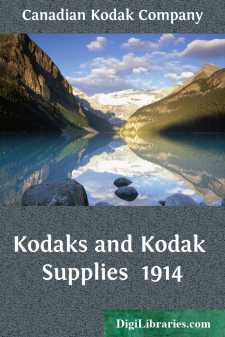Categories
- Antiques & Collectibles 13
- Architecture 36
- Art 48
- Bibles 22
- Biography & Autobiography 813
- Body, Mind & Spirit 142
- Business & Economics 28
- Children's Books 15
- Children's Fiction 12
- Computers 4
- Cooking 94
- Crafts & Hobbies 4
- Drama 346
- Education 46
- Family & Relationships 57
- Fiction 11828
- Games 19
- Gardening 17
- Health & Fitness 34
- History 1377
- House & Home 1
- Humor 147
- Juvenile Fiction 1873
- Juvenile Nonfiction 202
- Language Arts & Disciplines 88
- Law 16
- Literary Collections 686
- Literary Criticism 179
- Mathematics 13
- Medical 41
- Music 40
- Nature 179
- Non-Classifiable 1768
- Performing Arts 7
- Periodicals 1453
- Philosophy 64
- Photography 2
- Poetry 896
- Political Science 203
- Psychology 42
- Reference 154
- Religion 513
- Science 126
- Self-Help 84
- Social Science 81
- Sports & Recreation 34
- Study Aids 3
- Technology & Engineering 59
- Transportation 23
- Travel 463
- True Crime 29
Kodaks and Kodak Supplies 1914
Description:
Excerpt
ake it simpler.
From the very inception the Kodak Idea has been—make photography so simple that anybody can take good pictures.
Simpler cameras, simpler processes have followed each other with almost startling rapidity. But the Kodak Company has not been satisfied with merely making mechanical and chemical improvements; it has assumed the responsibility of educating people in picture taking. The very first Kodak, way back in 1888, was accompanied by a so-called "manual" that did more than merely explain the operation of the mechanical features of the camera. It showed how the pictures should be taken, how (and how not) to photograph a tall building, how to photograph a small child—told about the length of exposures in different kinds of light, both in-doors and out. It was really a primary hand-book of photography.
From that day on, every piece of Kodak apparatus, every amateur product of the Company has been accompanied by the most concise instructions, instructions that were also constructive because they not only told the beginner what to do but why he was to do it. Even in the Kodak advertising matter as much space is given up to telling people how to make pictures as in telling them why they should buy Kodak goods. Booklets in large editions, giving instructions in practically every phase of amateur photography have been and still are distributed without charge. Photography has not merely been made simpler, it has been explained to all who are interested.
"Kodakery"—A Monthly Help
And now comes a new help to the beginner—"Kodakery," a little magazine that will tell the amateur how to get better pictures. It's beautifully illustrated. Written and edited by those who know photography inside and out and who also know the places where the amateur has trouble, it will be a joy and a help to every enthusiast, will add for thousands to the Witchery of Kodakery.
Every purchaser, after May 1st, 1914, of a Kodak or Brownie camera will be entitled to "Kodakery" for one year without charge—he may have it continued by subscribing at 50 cents per year if he so desires. In the back of each Kodak and Brownie manual, which we are now printing, is a "subscription blank" which, upon being properly filled out and mailed to—"Kodakery," Toronto, Ont.—will entitle the purchaser of such camera to one year's free subscription to "Kodakery." At the time this plan goes into operation there may still be some such manuals without a subscription blank, but in such case a blank may be obtained from the dealer of whom the camera was purchased. Every purchaser of a Kodak or Brownie Camera is entitled to one copy of the manual or instruction book and to one year's subscription to "Kodakery."
The editors of "Kodakery" aim first of all to make the little book a real help. At the same time it will be interesting and its delightful illustrations will show the beginner new possibilities in amateur photography. This little magazine is but a part of the Kodak Service. To sell a camera and then turn the customer adrift has never been a part of the Kodak plan....



